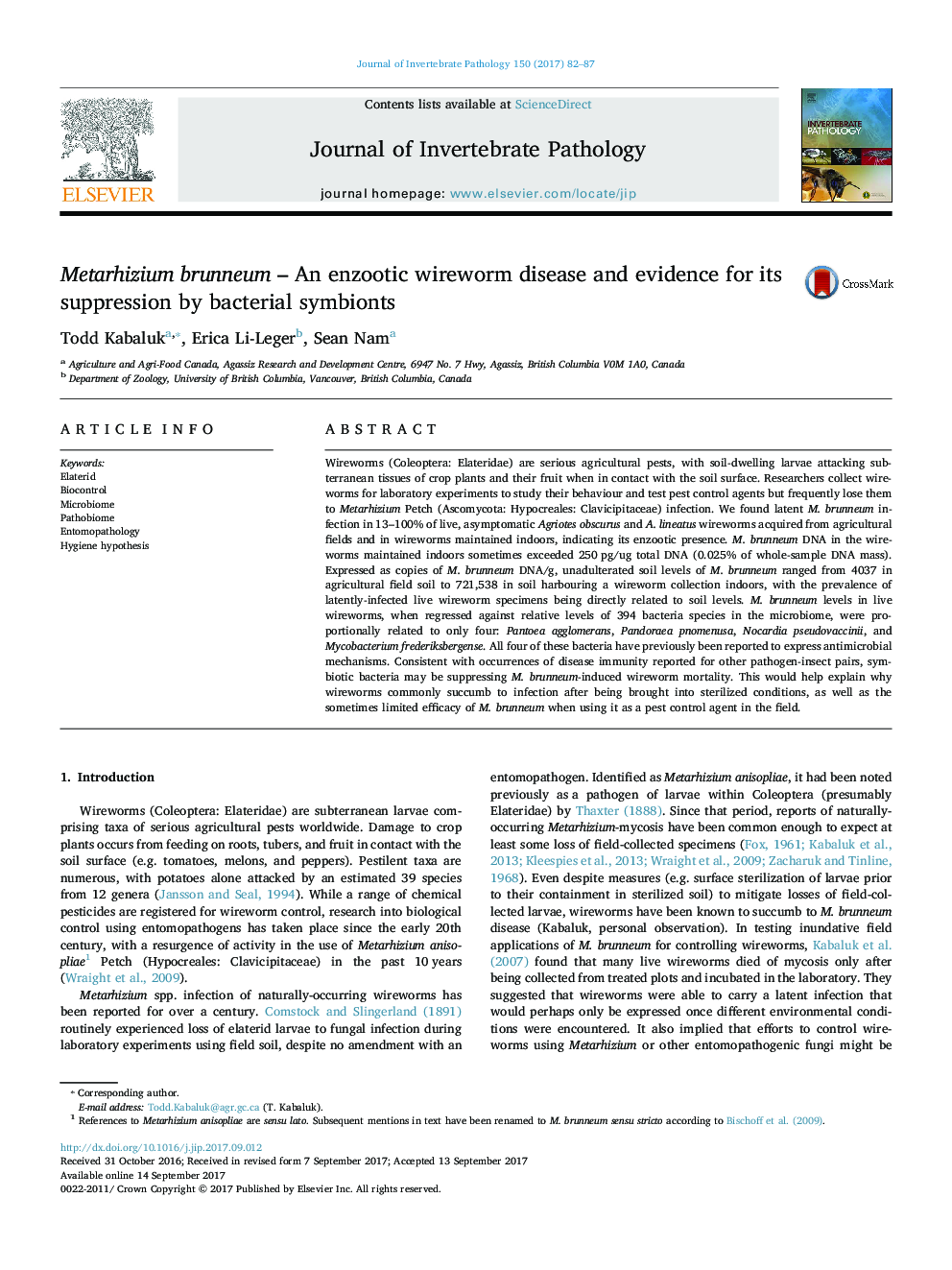| Article ID | Journal | Published Year | Pages | File Type |
|---|---|---|---|---|
| 5766912 | Journal of Invertebrate Pathology | 2017 | 6 Pages |
â¢M. brunneum is enzootic in Agriotes obscurus and A. lineatus larval populations.â¢The percent of larvae infected with M. brunneum depends on M. brunneum soil level.â¢Some wireworms resist mycosis despite exposure to M. brunneum in soil.â¢Resistance of wireworms to mycosis appears to be related to symbiotic bacteria.â¢Levels of four bacteria species correlate with prevalence of Metarhizium infection.
Wireworms (Coleoptera: Elateridae) are serious agricultural pests, with soil-dwelling larvae attacking subterranean tissues of crop plants and their fruit when in contact with the soil surface. Researchers collect wireworms for laboratory experiments to study their behaviour and test pest control agents but frequently lose them to Metarhizium Petch (Ascomycota: Hypocreales: Clavicipitaceae) infection. We found latent M. brunneum infection in 13-100% of live, asymptomatic Agriotes obscurus and A. lineatus wireworms acquired from agricultural fields and in wireworms maintained indoors, indicating its enzootic presence. M. brunneum DNA in the wireworms maintained indoors sometimes exceeded 250Â pg/ug total DNA (0.025% of whole-sample DNA mass). Expressed as copies of M. brunneum DNA/g, unadulterated soil levels of M. brunneum ranged from 4037 in agricultural field soil to 721,538 in soil harbouring a wireworm collection indoors, with the prevalence of latently-infected live wireworm specimens being directly related to soil levels. M. brunneum levels in live wireworms, when regressed against relative levels of 394 bacteria species in the microbiome, were proportionally related to only four: Pantoea agglomerans, Pandoraea pnomenusa, Nocardia pseudovaccinii, and Mycobacterium frederiksbergense. All four of these bacteria have previously been reported to express antimicrobial mechanisms. Consistent with occurrences of disease immunity reported for other pathogen-insect pairs, symbiotic bacteria may be suppressing M. brunneum-induced wireworm mortality. This would help explain why wireworms commonly succumb to infection after being brought into sterilized conditions, as well as the sometimes limited efficacy of M. brunneum when using it as a pest control agent in the field.
Graphical abstractDownload high-res image (113KB)Download full-size image
